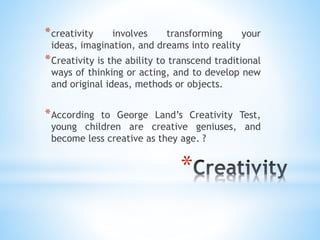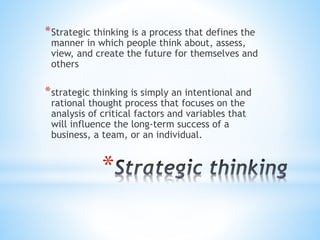The document discusses strategic thinking and related concepts. It defines strategic thinking as a process that involves considering key issues in a comprehensive way and maintaining a long-term view. The document outlines several components of strategic thinking, including tools for analysis like SWOT, having a clear strategic purpose and vision, identifying values and key goals, and developing action plans. It also provides tips for strategic thinking such as prioritizing tasks, overcoming bias, improving listening and questioning skills, and understanding consequences.




























